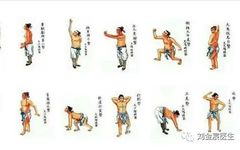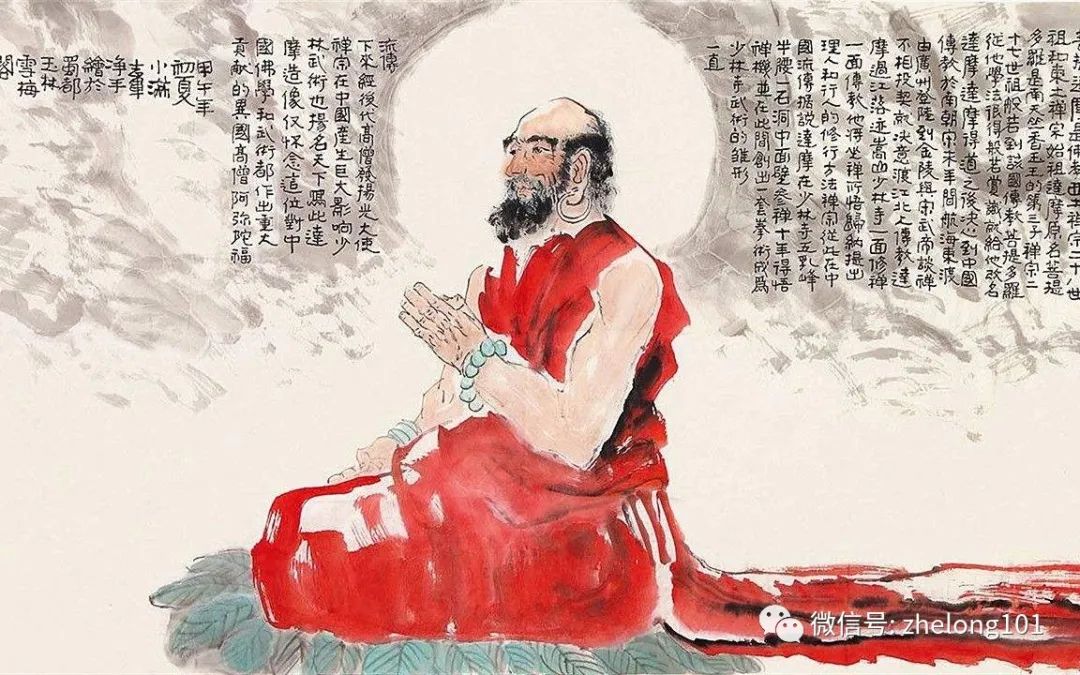
TCM Knowledge | What Practical Tools Are in the Six Arts of TCM?
The Six Major Technical Systems of Traditional Chinese Medicine are recorded in the Suwen: On the Appropriateness of Different Methods, which include Acupuncture, Moxibustion, Bloodletting, Herbal Medicine, Tuina, and Daoyin. Among these, Acupuncture, Moxibustion, Bloodletting, Herbal Medicine, and Tuina are external methods that work from the outside in; Daoyin is an internal method that works from the inside out. Daoyin harmonizes with other methods, mobilizing the body’s vital energy to achieve maximum results with minimal effort. Historically, Daoyin has been widely used at various stages of life for preserving life, health maintenance, disease prevention, and rehabilitation, and has been emphasized by renowned physicians such as Hua Tuo, Ge Hong, Sun Simiao, and Chao Yuanfang.
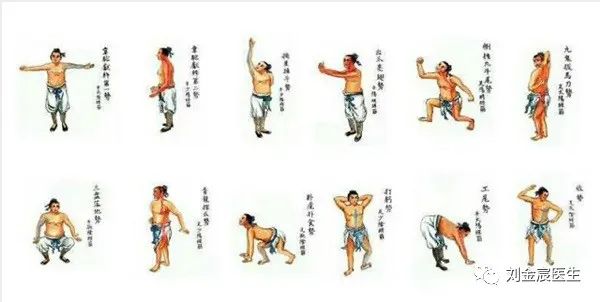
Daoyin as an Intangible Cultural Heritage
“Ancient Yi Jin Jing Twelve Movements” is a classic of TCM Daoyin. Based on the philosophy of the I Ching and guided by the theories of TCM meridians and Qi and blood, it achieves the effects of strengthening muscles and bones, consolidating vital energy, nourishing the organs, and cultivating the mind through stretching and relaxing the muscles and bones, expelling the old and taking in the new, and maintaining harmony.
Each movement targets a specific meridian, nourishing the corresponding meridians and organs. Additionally, the practice is not limited by time or space, and its effects are significant, allowing for the timely elimination of physical and mental fatigue, making it very suitable for modern individuals. Young people practicing Yi Jin Daoyin can strengthen their muscles and bones and promote physical development. Adults practicing Yi Jin Daoyin can help relieve physical and mental fatigue, prevent disease occurrence, and avoid chronic fatigue syndrome.
Preparation and Warm-Up Before Daoyin
Before practicing the Twelve Movements of Yi Jin Jing, first empty the bowels and bladder, wear loose and breathable clothing, and tie a belt around the waist. There is a meridian at the waist called the Dai Mai, which runs horizontally around the waist, regulating the body’s meridians and Yin-Yang, allowing clear Qi to rise and turbid Qi to descend. When the clear and turbid are separated, the complexion improves, and energy becomes abundant. It is important to note that the belt should not be an elastic band, as it will change with the contraction and expansion of the abdomen, while a regular belt constrains the expansion, effectively preventing abdominal stagnation and also providing protection to the lumbar muscles and vertebrae.Each movement of the Twelve Movements of Yi Jin Jing begins with the requirement of clenching the teeth, tongue against the palate, eyes looking straight ahead, and regulating the nasal breath.
“Clenching the teeth” is the beginning of practicing the muscles and bones. TCM believes that the kidneys govern the bones, and the teeth are the extensions of the bones. “Clenching the teeth and tapping the teeth” can strengthen the teeth and bones. Clenching the teeth, also known as “tapping the teeth” or “pecking the teeth,” is mentioned in the sixteen principles of health preservation: “Teeth should be tapped regularly.” This can be done whether sitting, lying, standing, or walking. I remember a student once asked if it was necessary to clench the teeth when they had a full set of dentures. The answer is yes; clenching the dentures can stimulate the gums to prevent atrophy. “Tongue against the palate,” according to TCM, the tongue is the sprout of the heart. When the tip of the tongue touches the palate, it generates saliva. The sixteen principles of health preservation state: “The tongue should be held against the palate regularly.” This forms a circulation between the Ren Mai and Du Mai, known in Daoism as the Small Heavenly Circuit.
“Eyes looking straight ahead” means that the Twelve Movements of Yi Jin Jing require the eyes to be open during practice. TCM believes that the eyes are the residence of the spirit. Opening the eyes has the effect of training the spirit. If the practitioner feels weak and unconsciously closes their eyes during practice, they should take a short break and resume practice after regaining their spirit.“Regulating the nasal breath,” beginners can inhale through the nose and exhale through the mouth, and once the breathing is regulated, switch to inhaling and exhaling through the nose. The sixteen principles of health preservation state: “Nasal breathing should be regulated.” Beginners should consciously practice regulating their breath until it becomes a habit. Note: Older practitioners, especially men, should trim their nasal hair if it is long, as one of the functions of hair is to help with contraction, and excessively long nasal hair can affect airflow. The above are the preparatory tasks for practicing the Ancient Yi Jin Jing Twelve Movements.If you wish to study further, please refer to the Da Mo Yi Jin Jing published by Shanghai Ancient Books Publishing House and the Ancient Twelve Movements of Daoyin (Scientific Popularization Edition) published by the People’s Military Medical Publishing House.
Complete Explanation of Yi Jin Jing


Detailed Explanation of the Yi Jin Jing Techniques

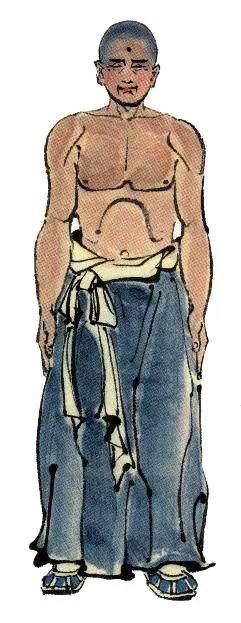
|
Stand with legs apart, head level, eyes looking straight ahead, mouth slightly closed, and regulate breathing. Chest slightly concave, back straight, abdomen relaxed, shoulders relaxed, the whole body naturally relaxed. |
Preparation Movement
Stand relaxed, chin tucked in,
gaze inward, breathing naturally adjusts the body posture.
Relax the body and mind, and the movements should follow the intention,
allowing thoughts to settle, practice the three harmonies well.
First Movement: Wei Tuo Presents the Pestle
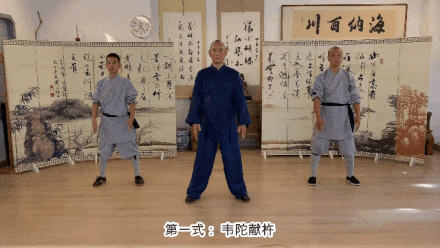
1. Key Points:
Stand upright, arms rounded in front of the chest,
calm the mind and gather the spirit, clear the heart and maintain a respectful demeanor.
2. Wei Tuo Presents the Pestle Technique:
Left foot stands firm, arms extend forward, palms together at the chest,
calm the mind and gather the spirit to regulate the Qi mechanism, clear the heart and maintain a respectful demeanor.
Shoulders act as the axis, arms move, elbows bent, palms relaxed under the armpits,
deep, long, and even breathing, calming the body and mind.
3. Key Points of the Movement:
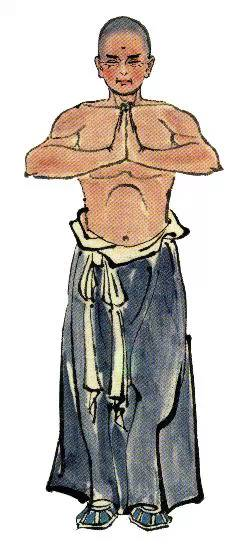
A. Preparation Stance: Stand with feet parallel, shoulder-width apart, knees slightly bent, arms naturally hanging at the sides, fingers slightly bent and together, eyes looking straight ahead, then relax, gently close the eyes as if curtains are drawn. Maintain a calm mind, peaceful spirit, cleanse the heart, and maintain a respectful demeanor. Relax the entire body from head to toe, including the neck, shoulders, arms, chest, abdomen, hips, thighs, calves, and feet, ensuring no tension in the body, no distracting thoughts, and a focused spirit.
B. Continue with internal observation and relaxation, focusing the spirit inward, guiding Qi and blood to the mind, feeling the head clear and fresh like morning dew. Guide Qi downward, observing the throat, feeling the neck relax. Guide Qi downward, observing the lower dantian, feeling the chest open and the spirit refreshed. Guide Qi downward, observing the spleen and stomach, feeling the middle burner warm and the stomach comfortable. Guide Qi downward, observing the lower dantian, feeling the mingmen fire warm and abundant, the abdomen warm and relaxed. Guide Qi downward, observing the perineum, feeling the perineum relax. Guide Qi along the inner sides of the legs downward, observing the Yongquan point, feeling boundless vitality surging upward.
C. Arms rounded in front of the chest: Slowly raise both arms, palms facing each other at shoulder width, arms straight, then bend the elbows, letting the elbows naturally drop, slowly bringing the hands inward to about a fist’s distance from the chest, fingertips overlapping, thumbs lightly touching, palms facing inward. At this moment, relax the shoulders, round the chest, sink the Qi to the dantian, tongue against the palate, and smile.
Second Movement: Wei Tuo Presents the Pestle Two (Horizontal Burden to Subdue Demons)
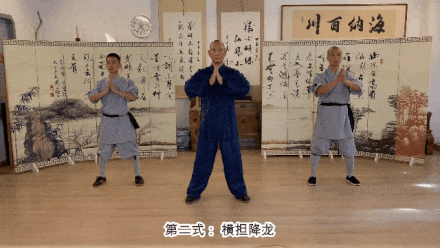
1. Key Points:
Feet touching the ground, arms spread wide,
calm mind and still spirit, eyes wide open.
2. Wei Tuo Presents the Pestle Two Technique:
Raise both elbows, palms extended, arms spread wide,
using the palms to grip the ground, slowly expand the chest.
Inhale, raise the elbows, extend the palms forward, arms level with the shoulders,
fingers upright, wrists straight, palms facing upward, using internal strength to push outward.
3. Key Points of the Movement:
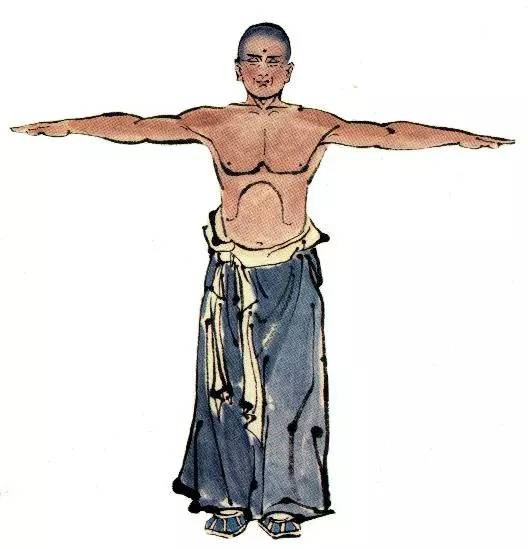
Continue from the previous movement, turning the palms downward, fingertips facing each other, slowly lowering them to the lower abdomen while guiding Qi downward. Separate the palms to the sides, turning the palms upward, slowly raising them to shoulder height, with the intention reaching far away. Both hands slightly above shoulder level, eyes looking straight ahead, gazing into the distance, tongue relaxed, waist and hips relaxed, toes gripping the ground as if to take root, the whole body relaxed, mind calm, eliminating distractions, and letting go of all attachments.
Third Movement: Wei Tuo Presents the Pestle Three (Palms Supporting the Heavenly Gate)
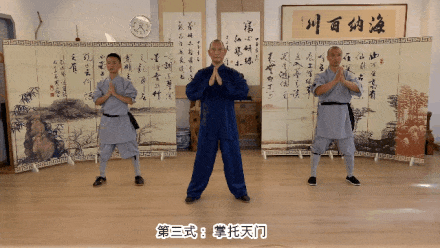
1. Key Points:
Palms supporting the heavenly gate, eyes looking up, toes touching the ground,
strength surrounding the legs, clench the teeth tightly;
the tongue can generate saliva against the palate, the nose can regulate breathing to feel at peace,
slowly retract the fists, using strength to hold the weight.
2. Wei Tuo Presents the Pestle Three Technique:
Relax the wrists, palms flat against the chest, the tiger’s mouth corresponding to the earlobes,
both palms supporting upward, shifting the center of gravity forward to lift the heels.
Both palms raised to the top of the head, strength reaching to the limbs and feet,
spine straight, chin tucked, clenching the teeth without loosening.
3. Key Points of the Movement:
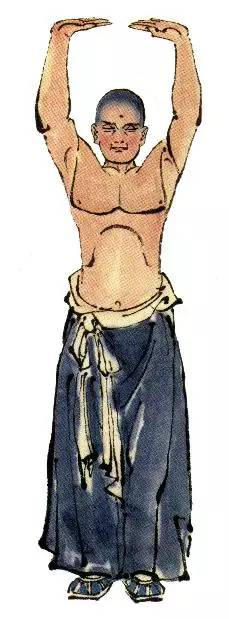
A. Palms supporting the heavenly gate, eyes looking up: Continue from the previous movement, raise both arms, palms facing each other, turning the palms upward, fingers facing each other, tongue against the palate, looking up at the sky, eyes gazing far away, heels raised, toes touching the ground.
B. Lowering the palms to guide Qi: Both palms turn downward, elbows slightly bent, head upright, eyes looking straight ahead, tongue relaxed, both bodies slowly lower to the lower abdomen, the spirit returning from the sky, penetrating from the Baihui point at the top of the head, through the throat, spinal cord to the tailbone, along both legs to the Yongquan point. As you guide downward, the heels follow the ground.
4. Core Essence:
Both palms raised to the head, chin slightly tucked, neck straight, lowering and raising to keep the entire spine upright, which stretches the cervical, thoracic, and lumbar vertebrae. Therefore, strength must reach the limbs, both arms must extend straight to support the head, allowing the spine to be upright, which is the tension, then relax. This alternation of tension and relaxation effectively mobilizes the spine.
Fourth Movement: Star Plucking and Dipper Changing Movement
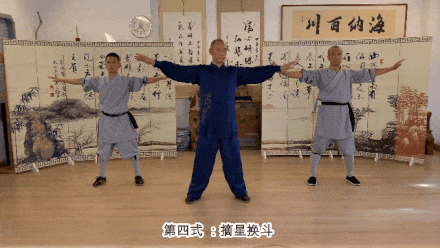
1. Key Points:
Both hands raised to the sky, covering the head, then gaze through the palms,
inhale through the nose, regulating the breath, forcefully retract the left and right eyes.
2. Star Plucking and Dipper Changing Technique:
Clench the fist, change to palm, rotate the body, palms fall beside the hips,
slowly rise to the top of the head, palms moving in front of the forehead to pluck the stars.
Using the waist to lead the shoulders and arms, straightening the knees and relaxing the wrists to adjust the body,
eyes looking at the palms, focusing on the mingmen point, adjusting the breath and pausing slightly.
3. Key Points of the Movement:
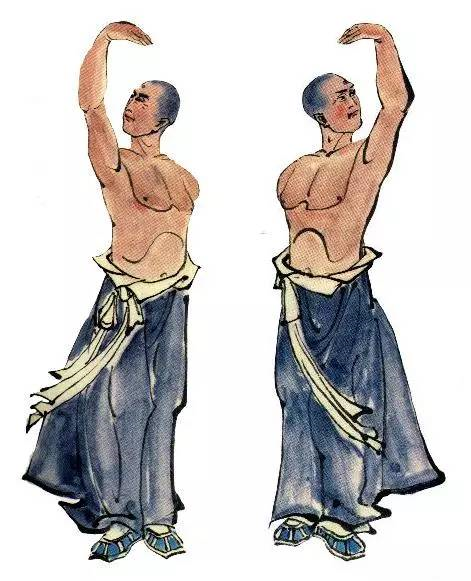
A. Both hands raised to the sky: Right hand slowly raises along the right side of the body, palm facing the sky, fingers bending left, relaxing the shoulders, the left arm tightly against the mingmen point. Tongue against the palate, looking up at the back of the hand, gazing through the back of the hand at the sky, the body stretches upward from the mingmen.
B. Lowering the palms to guide Qi: Right palm turns downward, slightly bending the elbow, head upright, eyes looking straight ahead, tongue relaxed, both bodies slowly lower to the lower abdomen, the spirit returning from the sky, penetrating from the Baihui point at the top of the head, through the throat, spinal cord to the tailbone, along both legs to the Yongquan point. As you guide downward, the heels follow the ground.
4. Core Essence:
Both palms raised to the head, chin slightly tucked, neck straight, lowering and raising to keep the entire spine upright, which stretches the cervical, thoracic, and lumbar vertebrae. Therefore, strength must reach the limbs, both arms must extend straight to support the head, allowing the spine to be upright, which is the tension, then relax. This alternation of tension and relaxation effectively mobilizes the spine.
Fifth Movement: Pulling the Tail of the Nine Cows
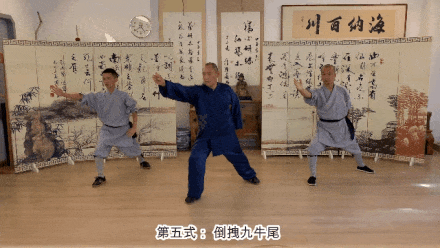
Click the animated image to enter the video breakdown teaching
1. Key Points:
Both legs extended back, bending forward, relax the lower abdomen,
the strength lies in both arms, focus on the fists with both eyes.
2. Pulling the Tail of the Nine Cows Technique:
Bend the knees, step back, and rotate the body, swinging the arms back and forth to form a bow,
both hands forming fists, pulling forward and backward, rotating the arms.
Using the waist to lead the shoulders, the strength penetrating both arms, tightening the back and relaxing,
alternating sides for three repetitions, coordinating the movements without stiffness.
3. Key Points of the Movement:
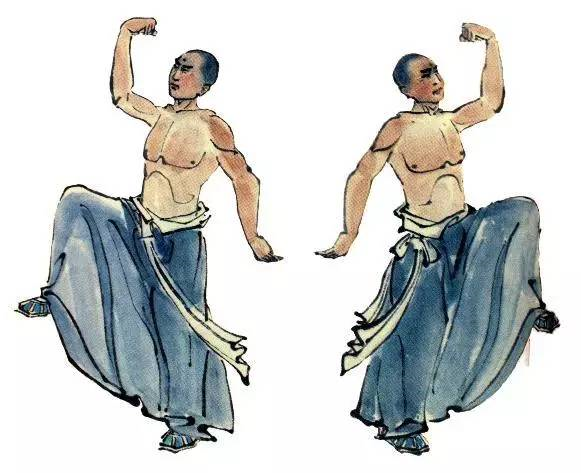
A. Step left to form a left bow stance. At the same time, raise the left fist, slightly above the head, fist facing inward, bending the elbow. The angle between the forearm and upper arm is slightly greater than a right angle. The elbow does not go past the knee, and the knee does not go past the foot, forming a semicircle, both legs observing the left fist. The right fist extends back with a straight elbow, fist facing backward, the two fists forming a spiral shape, known as the spiral neck. Relax the shoulders, keeping both shoulders level and smooth. Keep the back straight, waist relaxed, chest slightly concave, storing Qi in the lower abdomen, breathing evenly, tongue lightly against the palate.
B. Guide Qi downward, both fists relax into a half-fist shape. The tongue drops from the palate, shoulders and waist relax, the left palm generates Qi, eyes closed. Qi enters from the Tianmu point, penetrating through the brain, spinal cord, leg bones, reaching the Yongquan points in both feet. Turn to the right, performing the same movements as before, but mirrored.
Sixth Movement: Extending Claws and Spreading Wings
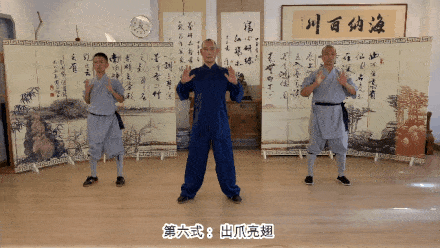
Click the animated image to enter the video breakdown teaching
1. Key Points:
Stand tall and glare, fists facing forward,
forcefully retracting, the technique must be complete seven times.
2. Extending Claws and Spreading Wings Technique:
Retract the feet, stand with arms raised, palms facing upward,
relax the shoulders, extend the arms, pushing outward,
the fingers spread, the wrists relaxed, eyes must glare.
Light as if pushing a window, moving slowly, heavy as if pushing a mountain, increasing internal strength,
the sea water returns, retract both arms, palms facing the chest.
3. Key Points of the Movement:
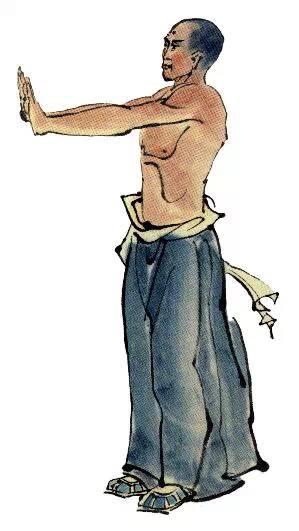
A. Fist protecting the waist from the first movement’s preparation stance, upper body leaning forward, both arms relaxed in front of the body, fists raised slowly from the front, placed at the waist, fists facing upward. At the same time, coordinate with the Qi, keeping the body straight and chest expanded, tongue lightly against the palate. For young people or those aiming to enhance strength, clench the fists tightly.
B. Both fists change to palms, slowly pushing forward, palms facing forward at the endpoint, wrists bent, eyes looking straight at the fingertips, extending far away.
C. Relax the wrists, palms open, fingers slightly bent, elbows bent, both hands slowly retract to the chest, the movement falling like the sea water returning, eyes gently closed, tongue lightly against the palate, coordinating with slow inhalation.
Seventh Movement: Nine Ghosts Pulling the Horse Knife
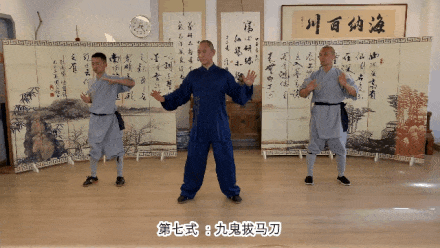
Click the animated image to enter the video breakdown teaching
1. Key Points:
Sideways bending the arms, embracing the top and neck, drawing back from the head,
do not mind the strength, rotating left and right, body straight and spirit calm.
2. Nine Ghosts Pulling the Horse Knife Technique:
Turn the body, swinging the arms around the top of the head, palms covering the ears while turning the head,
one palm resting on the jade pillow, the other palm against the spine.
Slowly extend the arms to expand the chest, eyes looking at the elbow tip for a moment,
bringing the arms together and pushing upward, twisting the spine to look at the heel.
3. Key Points of the Movement:
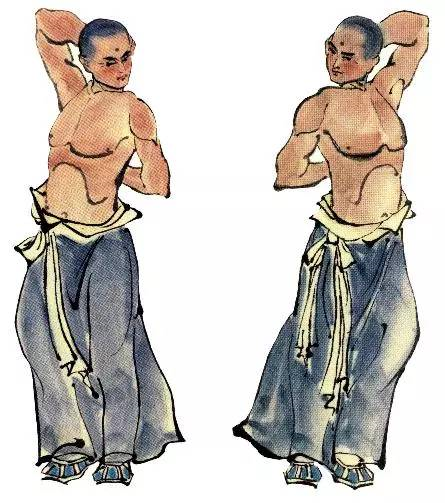
A. Right hand behind the back, palm facing outward, placed on the waist. Left hand raised over the head, elbow bent against the pillow, fingers pressing against the right ear, left armpit open. At the same time, the head, neck, waist, and back twist to the left rear, eyes looking at the right heel. Tongue lightly against the palate, pause for a moment.
B. Twist back to the center, looking up. Both eyes extending far. Tongue lightly against the palate, body straight and spirit calm. Both hands slowly lower along the front of the body, returning to the preparation stance. Movements 3 and 4 are the same as 1 and 2, but mirrored.
4. Core Essence:
Bringing the arms together and extending them fully twists and stretches the spine from the cervical vertebrae, thoracic vertebrae to the lumbar vertebrae. When bringing the arms together, as long as the knees remain relatively still, the waist can twist sufficiently, and then look at the heel, further twisting the waist. This also twists the thoracic and cervical vertebrae, and opens the important acupoints such as the Yuzhen and Jiajiao; through the body’s twisting and stretching movements, the kidneys can be strengthened.
Eighth Movement: Three Plates Falling to the Ground
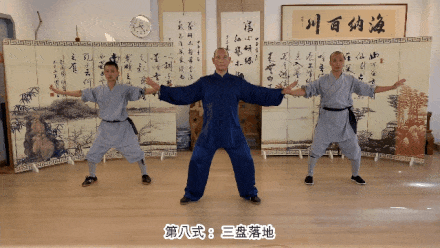
Click the animated image to enter the video breakdown teaching
1. Key Points:
The palate firmly supports the tongue, eyes wide open focusing on the teeth,
feet apart, squatting as if sitting, hands pressing down firmly as if grabbing,
eyes glaring while keeping the mouth closed, standing up without tilting.
2. Three Plates Falling to the Ground Technique:
Turn the body, step forward, arms extended, squatting down, pressing the palms down with force,
exhaling loudly to regulate the breath, flipping the palms and rising slowly.
Raising as if lifting a thousand pounds, pressing down with strength at the labor palace,
flipping the palms downward, shoulders leading the arms, turning the palms upward to the chest.
3. Key Points of the Movement:
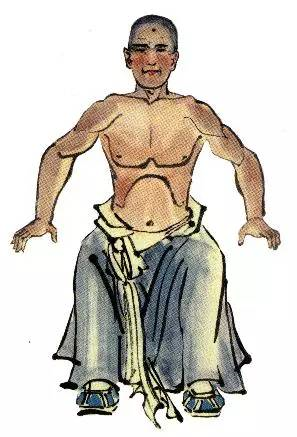
A. Same as the first movement’s preparation stance, bending the waist and squatting down, while both palms spread to the sides of the hips, fingers pointing left and right (slightly forward), tiger mouth supporting roundly, eyes looking forward, extending far. The upper body is empty, the lower body is solid, the chest is empty, the abdomen is full, relaxing the waist and tucking the hips, storing Qi in the lower abdomen. Ensure the top is level, shoulders are level, and the heart is calm. Practitioners of stillness can close their eyes and focus their spirit; the copper bell Qi Gong is derived from this, so it can also be practiced as a standalone stance.
B. Straighten both legs, flipping the palms up as if lifting a thousand pounds. At the same time, coordinate with the Qi, tongue against the palate, eyes looking straight ahead, the whole body relaxed.
Squatting down with palms pressing down (returning to the horse stance), coordinating with breathing, repeating this three times. Young and fit individuals should squat fully, and when standing up, do so slowly while raising the fists.
4. Core Essence:
Using the strength of the waist to squat can enhance the strength of the waist and abdomen, strengthening the kidneys.
Ninth Movement: Green Dragon Extending Claws
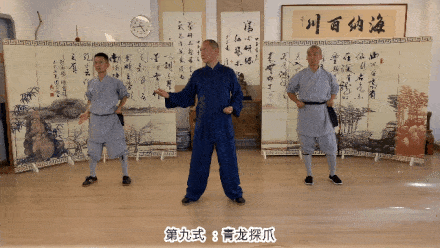
Click the animated image to enter the video breakdown teaching
1. Key Points:
Green dragon extending claws, left from right,
the practitioner imitates, palms flat and Qi solid,
strength surrounding the shoulders and back, wrapping around the knees,
both eyes focused, breath regulated and calm.
2. Green Dragon Extending Claws Technique:
Stand up, retract the steps, adjust the body, palms facing upward, arms level,
firmly gripping the fists against the zhangmen point, extending the arms and bending the elbows into a dragon claw shape.
Turn the body to extend the claws, changing palms downward, the intention continuous,
drawing arcs, turning the palms to grip upward, coordinating the movements into one.
3. Key Points of the Movement:
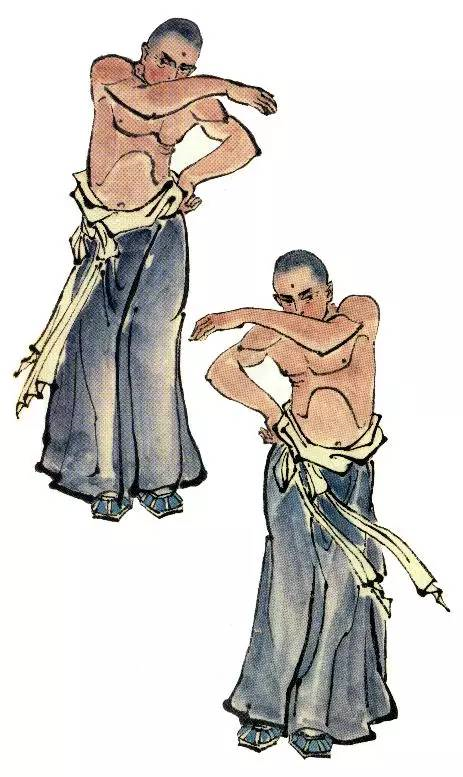
A. Upper body slightly bent, both hands clenched into fists, slowly raising from the front, placing at the waist, fists facing upward, coordinating with inhalation. Tongue lightly against the palate. Right fist presses against the zhangmen point, left fist changes to palm raised over the head, the waist bends slightly to the left, allowing the left waist to contract fully and the right waist to stretch fully. Palms facing downward, tongue lightly against the palate, breathing naturally, eyes looking at the left palm.
B. Bending the knees, the left hand turns palm up, the back of the hand slightly off the ground, drawing an arc from the left side to the front, reaching the outer side of the left foot; the right fist changes to palm downward, while the body turns upright, both fists together. Stand straight, placing the left palm at the zhangmen point. The right hand performs the same movements as the left, but mirrored.
Tenth Movement: Sleeping Tiger Pouncing on Prey
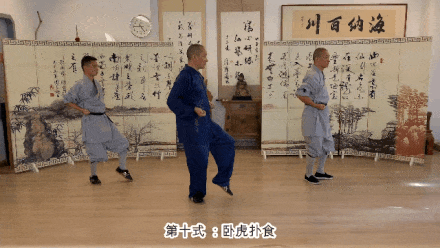
Click the animated image to enter the video breakdown teaching
1. Key Points:
Both feet apart, squatting as if leaning, alternating the left leg,
raising the head and chest to pounce forward, the back arched like a bow,
breath regulated evenly in and out, fingertips touching the ground for support,
subduing dragons and tigers, learning to maintain proper posture is also hygienic.
2. Sleeping Tiger Pouncing on Prey Technique:
Feet pointing inward, body turning, fists to the cloud gate changing to claw shape,
pouncing forward, elbows slightly bent, hands following the body’s movement.
Upper body bending down, claws pressing down, collapsing the waist and raising the head to puff out the chest,
strength reaching the fingertips to support the body, the back stretching into a reverse bow.
3. Key Points of the Movement:
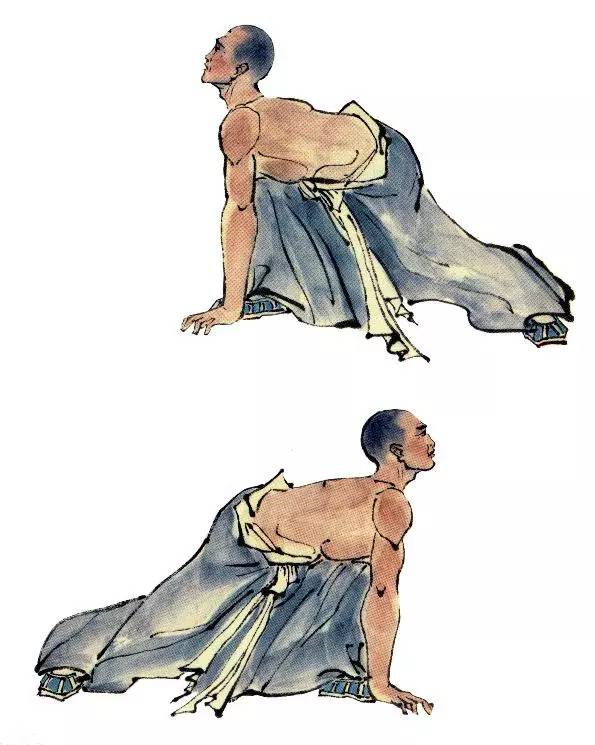
A. Upper body slightly bent, both hands clenched into fists, slowly raising from the front, placing at the waist, fists facing upward, coordinating with inhalation. Tongue lightly against the palate. Right fist presses against the zhangmen point, left fist changes to palm raised over the head, the waist bends slightly to the left, allowing the left waist to contract fully and the right waist to stretch fully. Palms facing downward, tongue lightly against the palate, breathing naturally, eyes looking at the left palm.
B. Bending the knees, the left hand turns palm up, the back of the hand slightly off the ground, drawing an arc from the left side to the front, reaching the outer side of the left foot; the right fist changes to palm downward, while the body turns upright, both fists together. Stand straight, placing the left palm at the zhangmen point. The right hand performs the same movements as the left, but mirrored.
Eleventh Movement: Bow and Arrow Stance
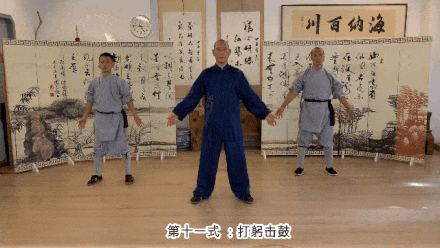
Click the animated image to enter the video breakdown teaching
1. Key Points:
Both hands holding the brain, between the waist and straight knees,
the head only leans down, the mouth clenches the teeth,
covering the ears to hear the cold, adjusting the vital energy to be relaxed,
the tongue still against the waist, strength in both elbows.
2. Bow and Arrow Stance Technique:
Stand up, turn the body to cover the ear holes, strike the sky drum seven times,
from the neck to the tail, the body leans forward, both elbows spread out and move segmentally.
Slowly rise from the tail to the neck, stretching the spine to keep the body upright,
repeating the bending and stretching three times, increasing the amplitude moderately.
3. Key Points of the Movement:
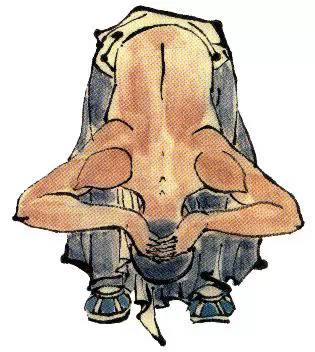
A. Both arms extended, raising above the head, looking up at the sky, head and neck straight, bending the elbows to hold the back of the head, palms covering the ears, both elbows spread out, parallel to the shoulders.
B. The upper body leans forward into a bowing position, the head drooping down to about the front of the knees. Both knees should not bend, breathing slightly, palms covering the ears. Use the fingers (index, middle, and ring fingers) to alternately lightly tap the back of the head (near the Fengchi point) 36 times.
C. Slowly extend the waist to stand upright, first twisting the waist to the left, then to the right, alternating seven times, keeping the feet still, waist straight, eyes relaxed, knees straight but not stiff, tongue naturally relaxed, smiling. When the body turns to the center, raise the heels, while both hands are raised above the head, palms facing upward in a supporting sky position, the body fully stretches, coordinating with inhalation.
4. Core Essence:
The upper body is slowly pulled forward from the head through the cervical, thoracic, lumbar, and sacral vertebrae, curling down like a hook. Then, from the sacrum to the lumbar, thoracic, cervical, and head, it is slowly extended in sequence, allowing the spine and Du Mai to be fully exercised, strengthening the waist and ensuring sufficient Yang energy.
Twelfth Movement: Tail Dropping Movement
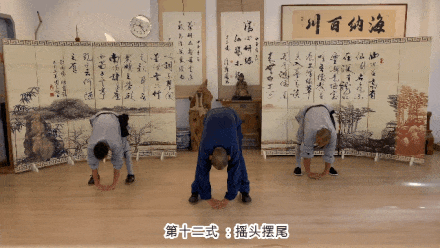
Click the animated image to enter the video breakdown teaching
1. Key Points:
With straight knees and extended arms, push the hands from the ground.
Eyes glaring and concentrating, stretching the brain left and right,
rising and stamping the feet, crossing the knees and focusing,
mouth focused on the heart, breath regulated through the nose,
calm and still before rising, preparing for the technique.
2. Tail Dropping Movement Technique:
Pull the ears forward, extending the fingers crossed, flipping the palms forward, retracting to the chest,
leaning down, collapsing the waist, looking up, both hands pressing down at the center of the feet.
Adjust the hips left and right, the head and hips facing each other, hands fixed,
shoulders and hips coordinating to adjust the spine, eyes looking at the tailbone and back moving.
3. Key Points of the Movement:
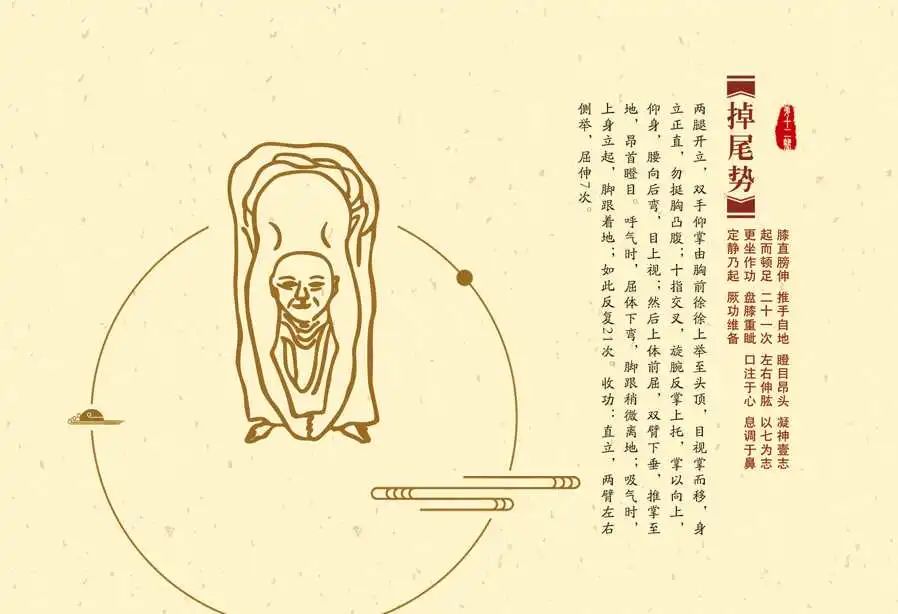
A. Both hands raised high above the sides of the body. Both palms together, lifting the top, stretching the waist, extending the arms, raising the heels as high as possible. When the heels touch the ground, both feet firmly planted, both palms drop to the chest. Fingers crossed and flipped, palms facing outward, both arms extend forward, straightening. Flipping the palms downward, slowly lowering to the groin area, bending forward, continuing to press down to the ground. Knees should not bend; if not reached, do not force it. When pressing down to the endpoint, raise the head, tongue against the palate. Repeat this bending and stretching 3-5 times. Over time, the palms can gradually approach the ground, making the waist as flexible as a child.
B. Twisting the waist to the left, feet remain still, only the left foot becomes light, the right leg becomes solid, the right knee slightly bent. At the same time, both hands maintain a crossed state, drawing an arc along the ground to the outer side of the left foot. Both arms remain extended, raising from the left side, turning the palms upward, looking up at the sky, twisting the waist 180 degrees to the right, slowly bending the waist to the right, pressing down to the outer side of the right foot; if not reached, do not force it, continue bending and stretching 3-5 times, gradually approaching the ground.
C. The last time pressing down to the outer side of the right foot, extend and stretch the waist, both arms raised above the head. Then twist the waist and turn back to the front. Both palms together, slowly lowering to the chest. Both palms slowly separate, fingers facing each other, pressing down, both hands naturally dropping to the sides of the hips, returning to the preparation stance. Both heels rise and fall, stamping the ground 3-21 times.
4. Core Essence:
Through collapsing the waist and raising the head, the head and hips move toward each other, harmonizing the Ren and Du meridians, while also improving the functional activity of the joints in the spine.
Muscles lengthen an inch, life extends ten years;
When bones are straight and muscles are soft, Qi and blood flow naturally.
Complete Video of the Ancient Yi Jin Jing Practice
| Click the link below to practice the complete set of Ancient Yi Jin Jing movements
Ancient Yi Jin Jing Daoyin Method (Preparation Movement) Ancient Yi Jin Jing Daoyin Method (Wei Tuo Presents the Pestle First Movement) Ancient Yi Jin Jing Daoyin Method (Wei Tuo Presents the Pestle Second Movement) Ancient Yi Jin Jing Daoyin Method (Star Plucking and Dipper Changing Movement) Ancient Yi Jin Jing Daoyin Method (Extending Claws and Spreading Wings Movement) Ancient Yi Jin Jing Daoyin Method (Pulling the Tail of the Nine Cows Movement) Ancient Yi Jin Jing Daoyin Method (Nine Ghosts Pulling the Horse Knife Movement) Ancient Yi Jin Jing Daoyin Method (Three Plates Falling to the Ground Movement) Ancient Yi Jin Jing Daoyin Method (Green Dragon Extending Claws Movement) Ancient Yi Jin Jing Daoyin Method (Sleeping Tiger Pouncing on Prey Movement) Ancient Yi Jin Jing Daoyin Method (Bow and Arrow Stance Movement) Ancient Yi Jin Jing Daoyin Method (Tail Dropping Movement) Ancient Yi Jin Jing Daoyin Method (Closing Movement) |

